$0.00
No products in the cart.
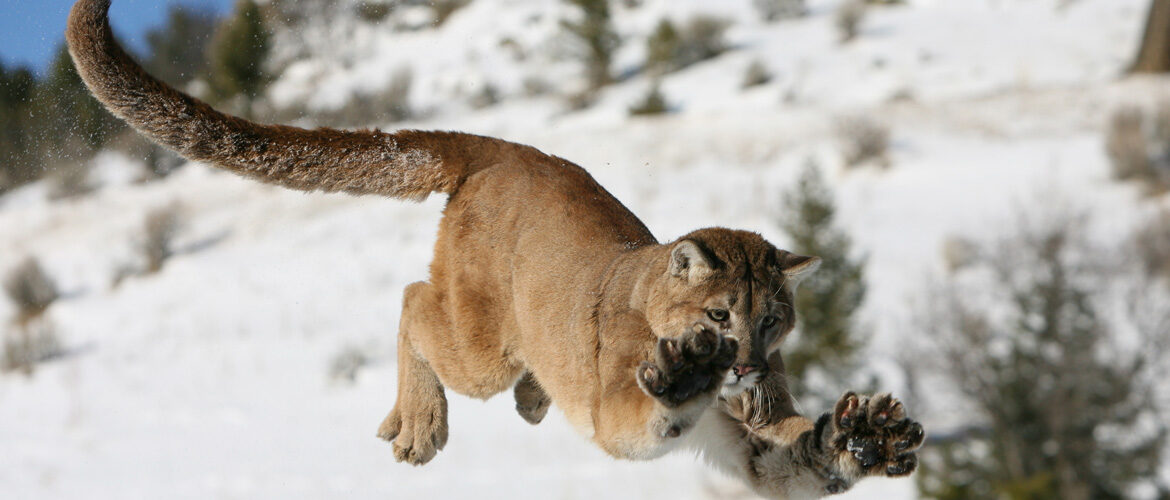
The mountain lion, a large cat species native to the Americas is, amongst other names known also as the cougar, puma, panther, or catamount which can be used interchangeably. The mountain lion is the second-largest cat in the New World, after the jaguar (Panthera onca). Secretive and largely solitary by nature, the mountain lion is considered both nocturnal and crepuscular, although daytime sightings do occasionally occur. Despite its size, the mountain lion is more closely related to smaller felines, including the domestic cat (Felis catus) than to any species of the subfamily Pantherinae.
The word cougar is borrowed from the Portuguese çuçuarana, via French; it was originally derived from the now extinct Tupian language, which was spoken by the aboriginal Tupi people of Brazil.
Felis concolor was the scientific name proposed by Carl Linnaeus in 1771 for a cat with a long tail from Brazil. The second half of the name, “concolor” is Latin for “of uniform colour”. It was placed in the genus Puma by William Jardine in 1834. The cougar is most closely related to the jaguarundi and the cheetah (Johnson, W. E.; Eizirik, E.; Pecon-Slattery, J.; Murphy, W. J.; Antunes, A.; Teeling, E. & O’Brien, S. J. (2006). “The Late Miocene radiation of modern Felidae: A genetic assessment).
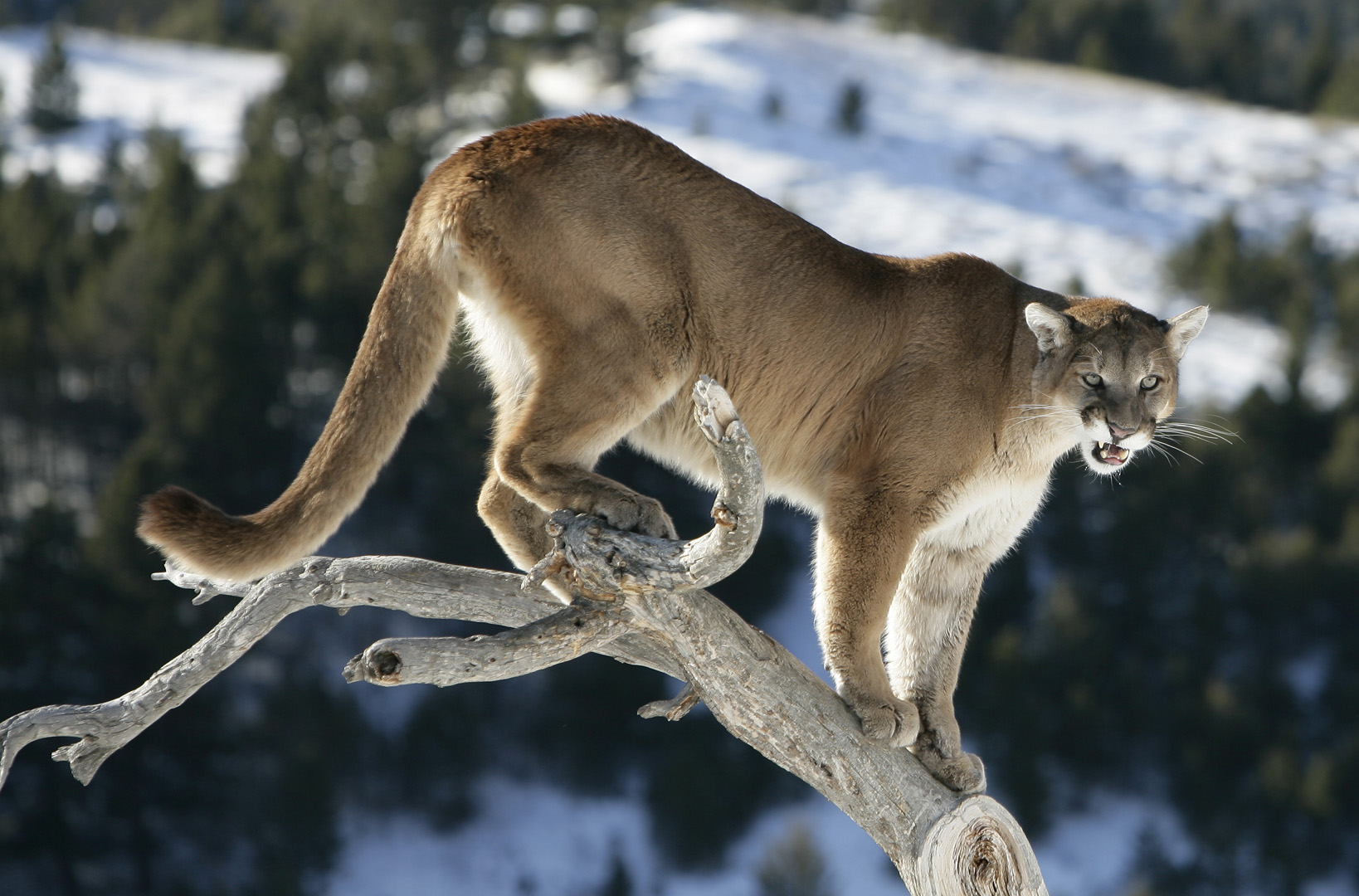
The mountain lion holds the Guinness record for the animal with the greatest number of names, with over 40 in English alone (Folkard, C. (2004). The Guinness Book of World Records). In the western United States and Canada, it is more commonly referred to as “mountain lion”, a name first used in writing in 1858 in the published “George A. Jackson’s Diary of 1858–1859”, where as “Puma” is the common name used in Latin America and most parts of Europe.
Mountain lions are an “umbrella species” for conservation because their conservation depends on the preservation of large amounts of suitable habitat.
A mountain lion usually requires about thirteen times as much area as a black bear or forty times as much area as a bobcat to survive, and thrive. By preserving enough wilderness to support a stable mountain lion population, countless other species of plants and animals that share mountain lion habitat benefit (Animal Diversity Web, University of Michigan Museum of Zoology).
Following Linnaeus’ first scientific description of the cougar in 1771, 32 cougar zoological specimens were described and proposed as subspecies until the late 1980s. Genetic analysis of cougar mitochondrial DNA indicate that many of these are too similar to be recognized as distinct at a molecular level, but that only six phylogeographic(meaning, a field of study that attempts to tease apart relationships among individual genotypes within a species or within a group) groups exist. The Florida panther samples showed a low microsatellite variation, possibly due to inbreeding(Culver, M.; Johnson, W. E.; Pecon-Slattery, J.; O’Brien, S. J. (2000). “Genomic Ancestry of the American Puma”).
Following this research, the authors of Mammal Species of the World recognized the following six subspecies in 2005 (Wozencraft, W. C. (2005):
In 2006, the Florida panther was still referred to as a distinct subspecies P. c. coryi in research works (Conroy, M. J.; Beier, P.; Quigley, H.; Vaughan, M. R. (2006). “Improving the Use of Science in Conservation: Lessons from The Florida Panther”. Journal of Wildlife Management) however, as of 2017, the Cat Classification Taskforce of the Cat Specialist Group recognizes only two subspecies as valid;
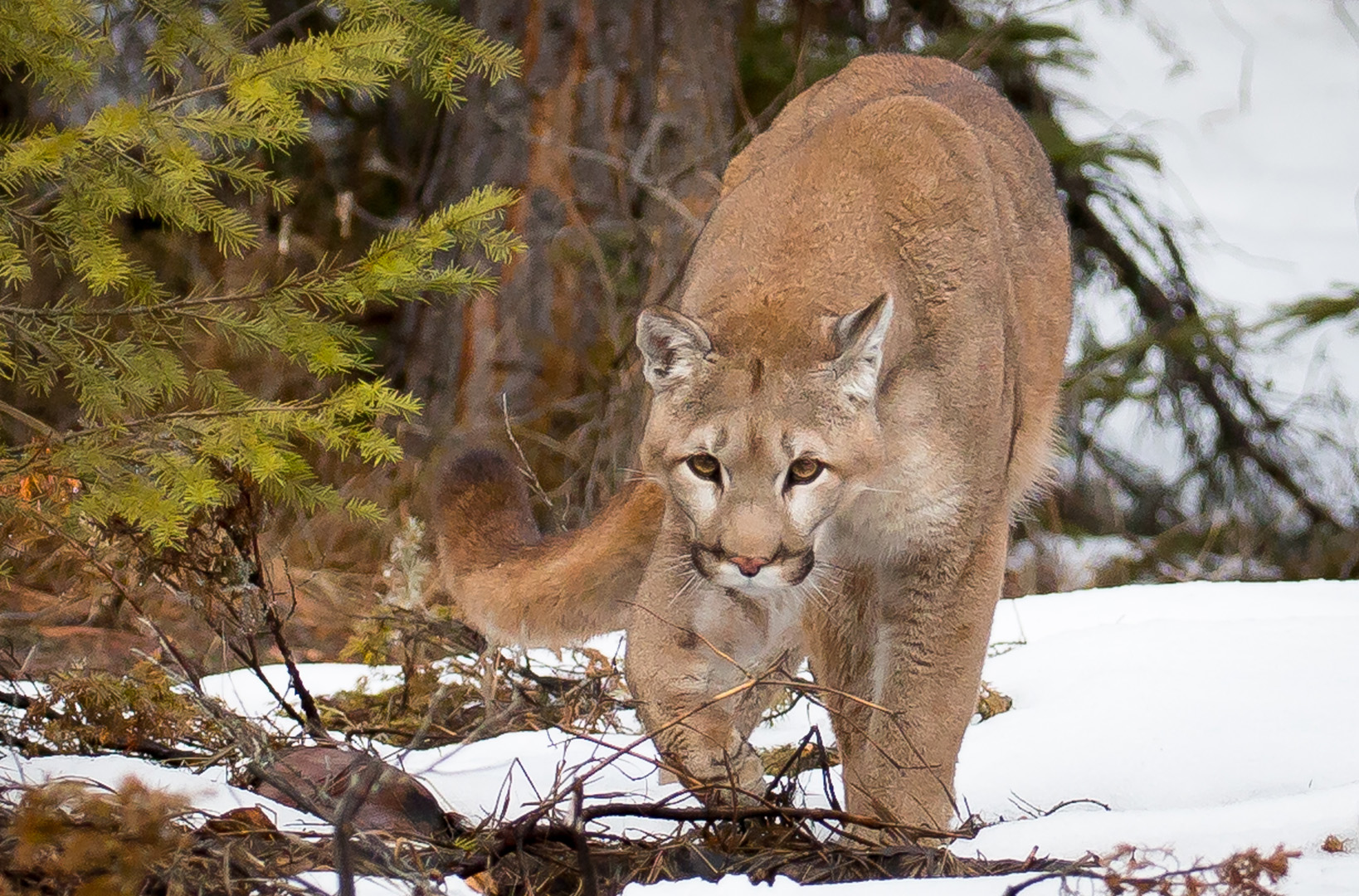
Mountain lions follow Bergmann’s rule, in that they vary hugely in average body size depending on geographic location—their size is smallest closer to the equator and largest closer to the poles. Generally, though, males weigh between 52 and 100 kilograms and females weigh between 29 and 64 kilograms. The length of these slender animals seems disproportionate to their stance, where an adult mountain lion can be anywhere from 600 to 900 millimetres tall at the shoulder and as long as 2.4 meters from nose to tail. The most recognizable feature of the mountain lion is its long and heavy tail, which measures almost one-third of the lion’s total length.
The head of the cougar is round and the ears are erect. Its powerful forequarters, neck, and jaw serve to grasp and hold large prey. It has four retractile claws on its hind paws and five on its forepaws, of which one is a dewclaw. The larger front feet and claws are adaptations for clutching prey (“Cougar”. Hinterland Who’s Who. Canadian Wildlife Service and Canadian Wildlife Federation).
Interestingly, mountain lions don’t roar, as you would expect the typical big cat would, as they have a different larynx. As a result, they communicate in different ways, such as chirping, growling, shrieking, and even purring.
Similar to young Lions, when mountain lions are first born, they look vastly different than their adult counterparts as they have blue eyes and dark spots on their fur. As they mature, their eyes will shift to yellow and their spots will fade into their iconic tawny coat, becoming almost unrecognizable over the course of just a few weeks.
The mountain lion’s range spreads across the Americas, from the Canadian Yukon to The Strait of Magellan, the greatest known range of any living mammal in the Americas. Mountain lions inhabit a wide range of ecosystems, making their home anywhere there is shelter and prey, including mountains, forests, deserts, and wetlands. They are territorial and have naturally low population densities, which means the species requires large parcels of wilderness habitat to survive.
The historic range of the mountain lion included almost all of North and South America. The species was so wide-reaching and populous for such a period that that localised adaptations resulted in multiple subspecies based on geographic location. Throughout the 1800s and early 1900s, people feared the mountain lion because it posed a risk to their livestock and because of this, the species was almost eradicated from the eastern United States. Due to conservation efforts, mountain lion populations in the western United States are stable, although far lower than they were historically. While there are still numbers of mountain lions in the wild, their population has decreased from their historical population mainly attributed to habitat destruction and human interfacing issues such as conflicts with livestock. Intensive hunting practices following European colonization of the Americas and ongoing human development into mountain lion habitat has caused the mountain lion populations to drop in most parts of its historical range more recently. In particular, the eastern mountain lion population is considered to have been mostly extirpated in eastern North America in the beginning of the 20th century, with the exception of the isolated Florida panther subpopulation. The reproductive cycle of mountain lions is such, that they can breed year-round. Female mountain lions usually give birth every two years. Litters can range in size from one to six cubs. The young may stay with their mother for as long as 26 months, but usually separate after about 15 months. Matsons Laboratory hold data of some 80,749 mountain lion age samples taken between 1978 and 2020, with the oldest lion registering at 22 years old, listed as having come from Montana.
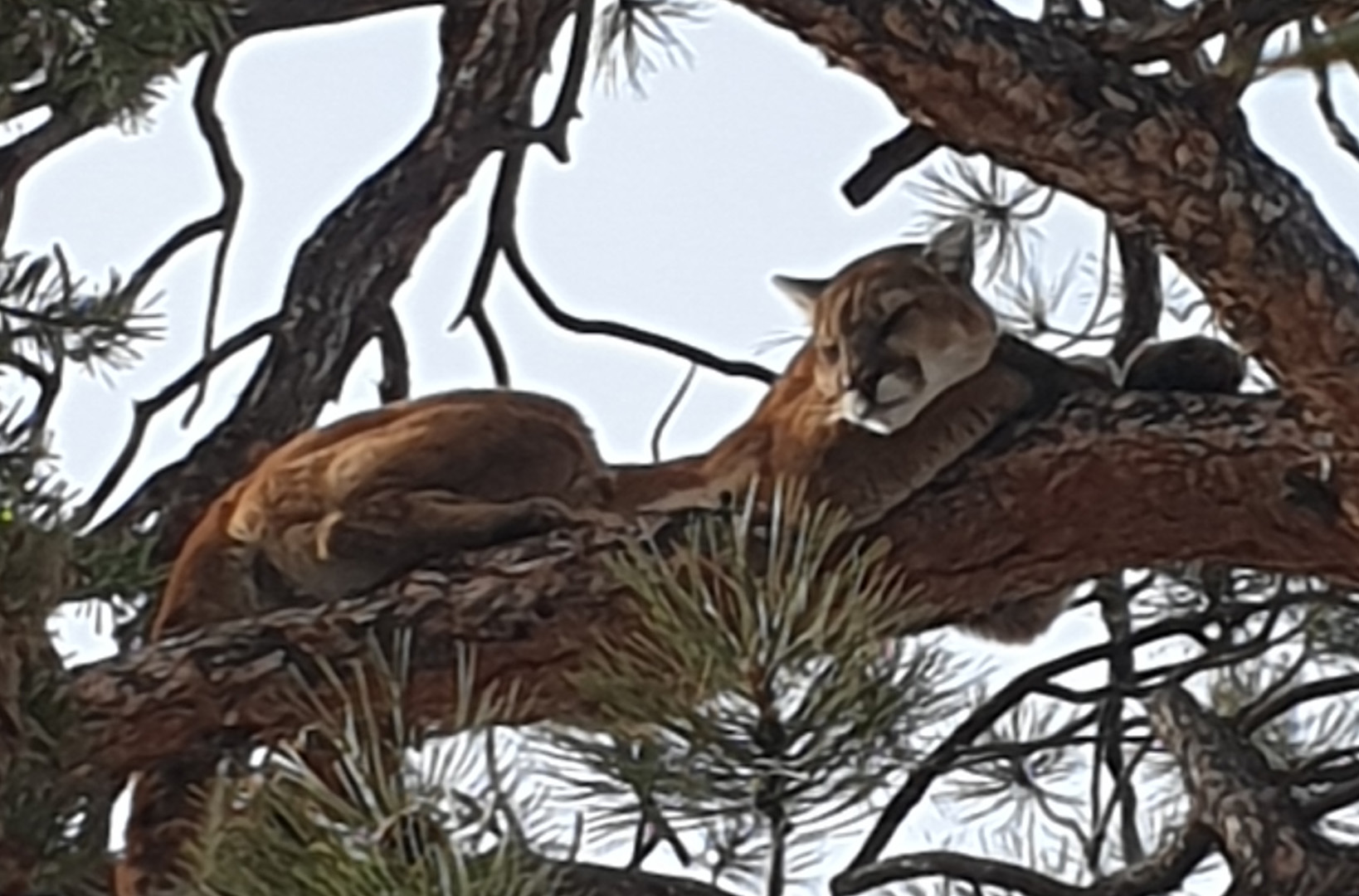
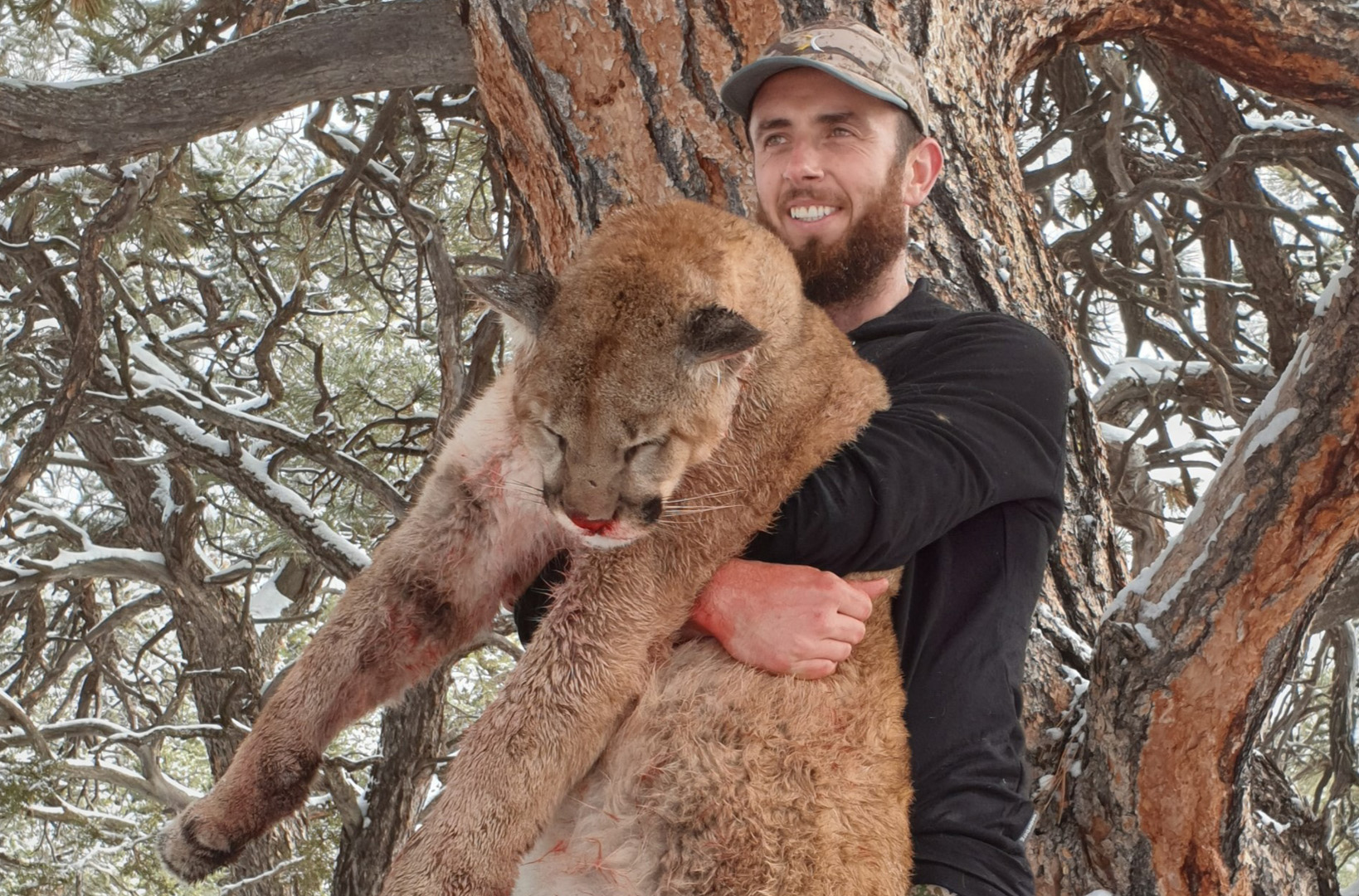
Typically known for their power and grace, mountain lions are common symbols in indigenous American culture, from mythology to art. While some indigenous peoples view mountain lions as symbols of bad omens, many see these apex predators as sacred and revered animals, such as the Inca people and the Cherokee. Cougars play a variety of different roles in Native American mythology. In some Western tribes, seeing a cougar or even hearing it is considered an evil omen, and cougars are often associated with witchcraft. On the other hand, among eastern tribes such as the Seminoles and Shawnees, cougars were considered noble animals with powerful hunting medicine, and is one of their major clan animals. In the legends of these tribes, the mountain lion, or “Panther” is sometimes featured as a leader or warrior of the animal people. Among the Pueblo tribes, the mountain lion is believed to have powerful hunting medicine and considered one of the six true directional guardians, associated with the north and the colour yellow. Several Pueblos had Cougar Societies, and Zuni hunters carried stone cougar fetishes for protection, ascribing to them both healing and hunting powers. In South America, cougars were associated with wealth and the earth by the Quechua (Incan) people, and many Quechua still consider it lucky to catch sight of a cougar today (Web – native-languages.org)
The cougar is a generalist hypercarnivore and acquires its sustenance by way of hunting at night, often lying in wait for prey or silently stalking it before pouncing and delivering a lethal bite to the spinal cord or throat. Typically they prey on deer, but also feed on smaller animals, even insects, when necessary. Like all cats, mountain lions are strict carnivores, and they only rarely consume vegetation.
Although they prefer large mammals such as mule deer, white-tailed deer, elk, moose, mountain goat and bighorn sheep; They will opportunistically take smaller prey such as rodents, lagomorphs(pikas, rabbits and hare), smaller carnivores, birds and even domestic animals including pets, where available (Naughton, D. (2014). The Natural History of Canadian Mammals).
Investigations at Yellowstone National Park showed that elk, followed by mule deer, were the mountain lions primary targets; the prey base is shared with the park’s wolves, with which the mountain lion competes with for resources. A study on winter kills from November to April in Alberta showed that ungulates accounted for greater than 99% of the cougar diet. Learned, individual prey recognition was observed, as some mountain lions rarely killed bighorn sheep, while others relied heavily on the species (Ross, R.; Jalkotzy, M. G. & Festa-Bianchet, M. (1993). “Cougar predation on bighorn sheep in south-western Alberta during winter”. Canadian Journal of Zoology).
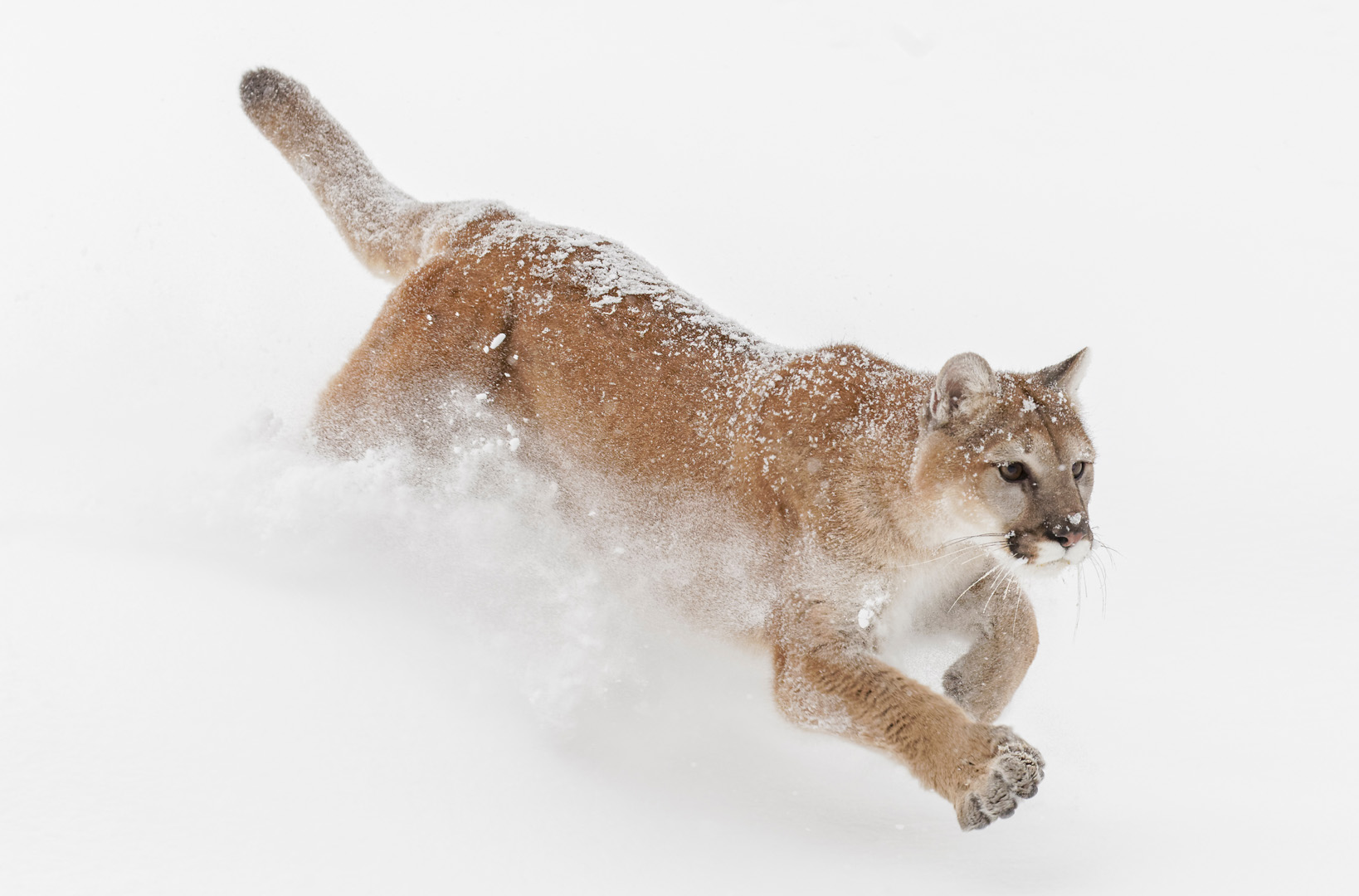
In the Central and South American cougar range, the ratio of deer in the diet declines. Small to mid-sized mammals are preferred, including large rodents such as the capybara. Ungulates accounted for only 35% of prey items in one survey, about half that of North America. Competition with the larger jaguar in South America has been suggested for the decline in the size of prey items. However, a study by Gutiérrez-González and López-González showed that the cougar and jaguar in Central or North America may share the same prey, depending on its abundance. Other listed prey species of the mountain lion include mice, porcupines, beavers, raccoons, guanacos, peccaries, vicuna, rheas, and even wild turkeys. Birds and small reptiles are sometimes preyed upon in the south, but this is rarely recorded in North America. (Iriarte, J. A.; Franklin, W. L.; Johnson, W. E.; Redford, K. H. (1990). “Biogeographic variation of food habits and body size of the America puma”).
Magellanic penguins (Spheniscus magellanicus) constitute the majority of prey items in cougar diet in Patagonia‘s Bosques Petrificados de Jaramillo National Park and Monte León National Park (Martínez, J.I.Z.; Travaini, A.; Zapata, S.; Procopio, D. & Santillán, M.Á. (2012). “The ecological role of native and introduced species in the diet of the puma Puma concolor in southern Patagonia”).
This display of significant adaptability in the mountain lion is admirable and lends itself to a contributing factor of anthropomorphism. The application of human like characteristics to animals has seen emotive management practice implemented across the mountain lions range, unfortunately often to its detriment.
While the IUCN lists the mountain lion as of “least concern”, similar to the Grizzly bear, the large cat is susceptible to sympathetic “general” public interest and States take great interest in reviewing the annual season for the animal, which is generally quite long. Typically hunted by way of hound, the hunt offers a phenomenal symbology between hunter and prey with the use of highly trained hounds to tree the cat, which also allows for extremely selective harvest. This can be done either during the winter, typically accompanied by snow or by way of dry ground, although, typically considered as requiring more skill. The mountain lion is CITIES listed and therefore the traveling hunter should consider this prior to undertaking hunts where the animal is available to hunt.